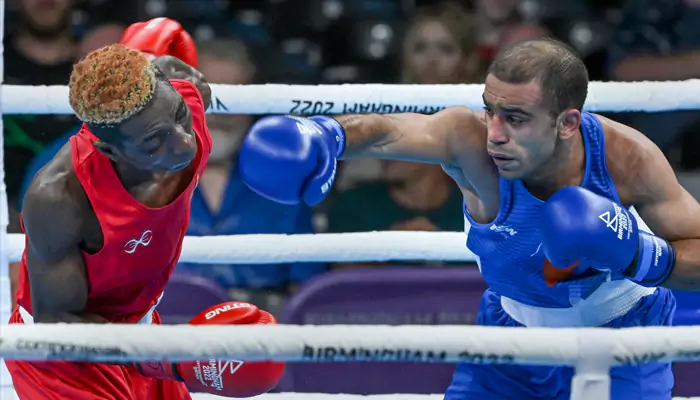
If you want to learn boxing, this can be a preamble!
Gaining proficiency in the basics and improving your technique are crucial if you're new to boxing. When navigating the nuances of this delightful discipline, a boxing trainer may provide important help. On their pugilistic journey, both novices and experienced boxing fans should become familiar with the following crucial techniques:
"Jab and Grab," as its name implies, is self-explanatory. This move, like many others in boxing, combines defence and offence as you lead in with a jab and then move swiftly to grasp your opponent to block any further blows that may be sent towards you. It's critical to close the distance quickly to prevent your opponent from having any space for their arms. Additionally, you must jab with the proper force and confidence since you want to strike first before your opponent does, otherwise, the motion is pointless. The Klitschko brothers frequently employ this technique, and Andre Ward is another contemporary practitioner of it.
Distinct from a jab, a straight punch packs significant power. Known as the "cross," this blow involves extending your dominant hand across your body. In an orthodox stance, with the left foot forward, the left hand jabs while the right delivers the straight. Conversely, southpaw fighters lead with their right foot and utilise their right hand for jabs and their left for straights. While orthodox fighters are typically right-handed and southpaws left-handed, exceptions exist. The straight is a staple in boxing combos, from basic one-twos to intricate counters. Floyd Mayweather exemplifies its effectiveness, employing rapid straights to control opponents and secure victories.
This technique shows the fighters' mastery and dedication, evident in their seamless execution. Essentially, it involves using the head to apply pressure against the opponent's body while unleashing left and right hooks without lifting the gaze. It's not a headbutt, but rather a defensive tactic, utilising the tucked head as a shield, forcing opponents to aim lower. This unexpected strategy disrupts typical training routines. Countering with uppercuts or lowering oneself can mitigate its effectiveness, but it risks head clashes and a gritty brawl. Boxers like Tim Bradley and Lamont Peterson excel in employing this low head stance to navigate matches tactically.
The "Pull Counter" manoeuvre, which comes out of the books of The Matrix, calls for a great deal of skill—and perhaps even inherent talent. In terms of technique, it is also among the easiest. After setting up the trap by slanting slightly in the direction of your opponent, you quickly turn your head back to block the punch that is being delivered and counter it with a straight. It's visually appealing in slow motion and mostly depends on the fighter's reactions. It is a constant in the armoury of tiny and large evasive fighters. Take into consideration Muhammad Ali and NaseemHamed, who both used this tactic to deadly effect.
The "Bolo Punch" is essentially a deceptive manoeuvre, resembling a long, swinging uppercut. However, its effectiveness lies in its ability to distract opponents. By dropping or swirling the back hand as if preparing for a heavy hook or straight, fighters create a feint, while the lead hand delivers the actual blow. Successfully executing this move requires convincing the opponent of the impending strike, which can leave the user vulnerable. Despite the risk, boxing legends like Sugar Ray Leonard and Kid Gavilan executed it with finesse, while modern greats like Roy Jones Jr. mastered its audacious deception.
There are also other myriad of moves that one can perfect to get a better grasp of boxing, such as the Haymaker, the Parry, and the Body Drop Feint.